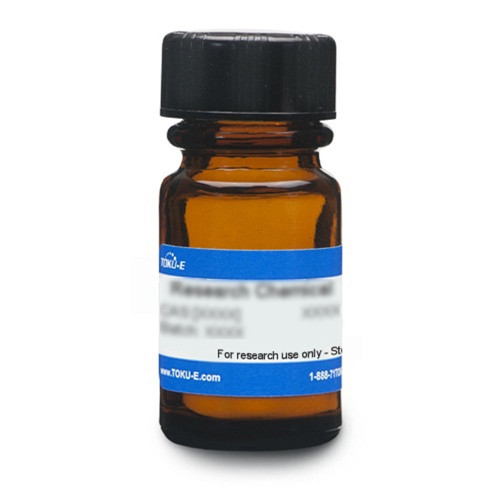Ceftiofur Hydrochloride is the hydrochloride salt of Ceftiofur, a broad-spectrum, third-generation β-lactamase resistant cephalosporin commonly used in veterinary research applications that was first described in 1987. Its metabolite (desfurolyceftiofur) also has antibiotic activity. Ceftiofur Hydrochloride is insoluble in water.
We also offer:
- Ceftiofur Sodium (C061)
| Mechanism of Action | Like β-lactams, cephalosporins interfere with PBP (penicillin binding protein) activity involved in the final phase of peptidoglycan synthesis. PBP’s are enzymes which catalyze a pentaglycine crosslink between alanine and lysine residues providing additional strength to the cell wall. Without a pentaglycine crosslink, the integrity of the cell wall is severely compromised and ultimately leads to cell lysis and death. Resistance to cephalosporins is commonly due to cells containing plasmid encoded β-lactamases. Like many cephalosporins, ceftiofur is resistant to β-lactamases. |
| Spectrum | Ceftiofur is a broad-spectrum antibiotic targeting a wide variety of Gram-positive and Gram-negative bacteria including the β -lactamase producing strains. |
| Microbiology Applications | Ceftiofur is commonly used in clinical in vitro microbiological antimicrobial susceptibility tests (panels, discs, and MIC strips) against Gram-positive and Gram- negative microbial isolates. Medical microbiologists use AST results to recommend antibiotic treatment options. Representative MIC values include:
Ceftiofur is resistant to β-lactamases. Resistant strains of E. coli have been reported. |
| Eukaryotic Cell Culture Applications | Ceftiofur was tested on equine bone marrow-derived mesenchymal stromal cells and did not affect cell viability (Parker et al, 2011). The influence of Ceftiofur was examined in vitro on bovine embryos during oocyte maturation, oocyte fertilization and embryo culture. When oocytes were exposed during oocyte maturation it did not affect embryo development, either at low (10, 50 µg/ml) or high (100, 200 µg/ml) concentrations. However, if fertilized embryos were exposed to 50 µg/ml, it retarded embryo development. Therefore, longterm exposure to high doses during post-fertilization adversely affects embryo development (Holyoak et al, 2009). |
| Molecular Formula | C19H17N5O7S3 • HCl |
| References | Georgopapadakou NH (1992) Mechanisms of action of cephalosporin 3'-quinolone esters, carbamates, and tertiary amines in Escherichia coli. Antimicrob. Agents Chemother. 37(3):559-565 PMID 8384817 Holyoak GR, Wang S, Liu S, Bunch TJ, Evans RC and Bunch TD (2009) The effects of Ceftiofur Sodium (axcel) on vovine oocyte and preimplantation embryonic development assessed by in vitro embryo production techniques. J. Vet. PHarmacol. Ther. 21(2):92-98 PMID 9597645 Parker RA, Clegg PD and Taylor SE (2011) The in vitro effects of antibiotics on cell viability and gene expression of equine bone marrow-derived mesenchymal stromal cells. Equine Vet. J. 44(3):355-360 Salmon SA, Watts JL, Yancey RJ (1996) In vitro activity of Ceftiofur and its primary metabolite, desfuroylceftiofur, against organisms of veterinary importance. J Vet Diagn Invest. 8(3):332-6. PMID 8844576 Yancey RJ et al (1987) Ceftiofur Sodium, a broad-spectrum Cephalosporin: Evaluation in vitro and in vivo in mice. Am. J. Vet. Res. 48(7): 1050-1053 PMID 3631686 |








